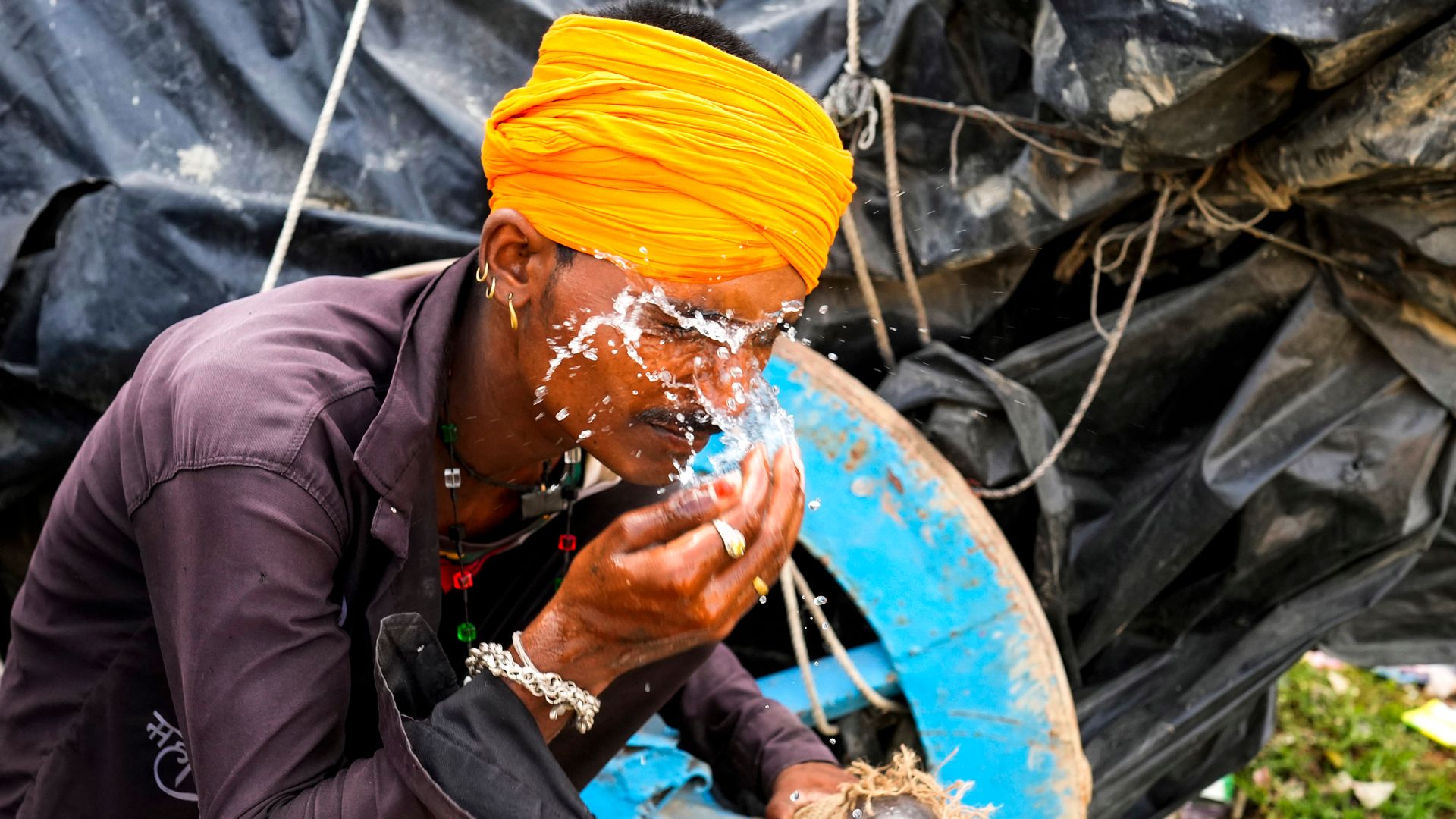
India heat wave sees surge in AC sales, pollution worries mount
By Mahmoud Bennett (Anchor), Stacey Chamberlain (Writer/Producer)
Media Landscape
This story is a Media Miss by the right as only 10% of the coverage is from right leaning media. Learn moreBias Distribution
Left
Right
Right
Untracked Bias
A heat wave in the world’s most populous country has killed nearly 100 people in just two regions of India alone. The temperatures are reaching above 110 degrees F. Asia just experienced the hottest April on record as the region continues to see excessive heat early in the summer. For the first time for many modernizing nations, there’s a new solution to bring relief: Air conditioners.
As incomes rise in places like China, India, Indonesia and the Philippines, the demand for air conditioners is surging. But while the technology could provide relief to millions, critics note it could also do irreparable damage to the planet.
By one estimate, the world will add 1 billion ACs before the end of the decade. The market is projected to nearly double before 2040. Daikin Industries, the world’s largest AC manufacturer, says sales have grown by more than 15 times in recent years.
Spreading AC coverage across the world’s poorest and hottest places poses a huge environmental risk. Most AC units use a refrigerant that’s far more damaging than carbon dioxide. One of the most common coolants, hydrofluorocarbons (HFCs) can have 1,000 times the warming potency of carbon dioxide.
In 2016, more than 170 nations agreed to start phasing out HFCs beginning in 2019, with wealthier countries required to make the biggest cuts.
The U.S. recently agreed to reduce HFC consumption by 85% within 15 years, which means Americans will be paying more for air conditioning.
While wealthier countries have tightened regulations on ACs, international climate leaders are now putting pressure on developing countries to lower their carbon footprint. But India and its peers point out that they still contribute far less to global emissions than places like the U.S., where nine out of 10 people have access to air conditioners.
The main challenge for India is to implement cleaner AC technology before millions of dirtier ACs are sold and used for the next 10 years.
Sweltering conditions are likely to continue in parts of central India through the beginning of the week. Sunday, the country registered its highest temperature of 114.8 degrees F.
MAHMOUD BENNETT: A HEAT-WAVE IN THE WORLD’S MOST POPULOUS COUNTRY HAS KILLED NEARLY 100 PEOPLE IN JUST TWO REGIONS OF INDIA ALONE. THE TEMPERATURES ARE REACHING ABOVE 110 DEGREES. AND ASIA JUST EXPERIENCED THE HOTTEST APRIL ON RECORD AS THE REGION CONTINUES TO SEE EXCESSIVE HEAT EARLY ON IN THE SUMMER. AND FOR THE FIRST TIME FOR MANY OF THESE MODERNIZING NATIONS – THERE’S A NEW SOLUTION TO BRING RELIEF – AT LEAST INDOORS. AIR CONDITIONERS.
AIR CONDITIONER SURGE COULD DAMAGE THE PLANET
AS INCOMES RISE IN PLACES LIKE CHINA, INDIA, INDONESIA AND THE PHILIPPINES, THE DEMAND FOR AIR CONDITIONERS IS SURGING. BUT WHILE THE TECHNOLOGY COULD PROVIDE RELIEF TO MILLIONS CRITICS NOTE IT COULD ALSO DO IRREPARABLE DAMAGE TO THE PLANET.
BY ONE ESTIMATE, THE WORLD WILL ADD 1 BILLION ACs BEFORE THE END OF THE DECADE. THE MARKET IS PROJECTED TO NEARLY DOUBLE BEFORE 2040. DAIKIN INDUSTRIES, THE WORLD’S LARGEST AC MANUFACTURER SAYS SALES HAVE GROWN BY MORE THAN 15 TIMES IN RECENT YEARS.
SPREADING A-C COVERAGE ACROSS THE WORLD’S POOREST AND HOTTEST PLACES POSES A HUGE ENVIRONMENTAL RISK. MOST A-C UNITS USE A REFRIGERANT THAT’S FAR MORE DAMAGING THAN CARBON DIOXIDE. ONE OF THE MOST COMMON COOLANTS, HYDROFLUOROCARBONS OR H-F-Cs, CAN HAVE 1,000 TIMES THE WARMING POTENCY OF CARBON DIOXIDE.
170 NATIONS AGREED TO PHASE OUT HFCs
IN 2016, MORE THAN 170 NATIONS AGREED TO START PHASING OUT HFCs BEGINNING IN 2019, WITH WEALTHIER COUNTRIES REQUIRED TO MAKE THE BIGGEST CUTS. THE U.S. RECENTLY AGREED TO REDUCE HFC CONSUMPTION BY 85-PERCENT WITHIN 15 YEARS. WHICH MEANS AMERICAN WILL BE PAYING MORE FOR AIR CONDITIONING.
WHILE WEALTHIER COUNTRIES HAVE TIGHTENED REGULATIONS ON ACs, INTERNATIONAL CLIMATE LEADERS ARE NOW PUTTING PRESSURE ON DEVELOPING COUNTRIES TO LOWER THEIR CARBON FOOTPRINT.
BUT INDIA AND ITS PEERS POINT OUT THAT THEY STILL CONTRIBUTE FAR LESS TO GLOBAL EMISSIONS THAN PLACES LIKE THE U-S, WHERE 9 OUT OF TEN PEOPLE HAVE ACCESS TO AC. THE MAIN CHALLENGE FOR INDIA IS TO IMPLEMENT CLEANER A-C TECHNOLOGY BEFORE MILLIONS OF DIRTIER ACs ARE SOLD AND USED FOR THE NEXT TEN YEARS.
INDIA’S HIGHEST TEMP REACHES NEARLY 115 DEGREES
SWELTERING CONDITIONS ARE LIKELY TO CONTINUE IN PARTS OF CENTRAL INDIA THROUGH THE BEGINNING OF THE WEEK. SUNDAY, THE COUNTRY REGISTERED ITS HIGHEST TEMPERATURE OF 114-POINT-8 DEGREES.
Media Landscape
This story is a Media Miss by the right as only 10% of the coverage is from right leaning media. Learn moreBias Distribution
Left
Right
Right
Untracked Bias
Straight to your inbox.
By entering your email, you agree to the Terms & Conditions and acknowledge the Privacy Policy.
MOST POPULAR
-
 AP Images
AP Images
Pope Francis in critical condition with asthma-like respiratory crisis
Read6 hrs ago -
 Getty Images
Getty Images
DOJ investigating UnitedHealth over Medicare Advantage billing: Report
Read8 hrs ago -
 Reuters
Reuters
Diddy’s defense attorney abruptly requests withdrawal from case
Watch 1:4021 hrs ago -
 Getty Images
Getty Images
Judge allows CNN lawsuit potentially worth billions to continue
ReadYesterday




